Making concrete - we make the solution ourselves: the
Concrete production at the facility is carried out in two situations: either we need a relatively small amount of material, or we have sufficient capacities to ensure the constant supply of significant portions of the solution. In any case, we will save a lot in comparison with the situation when concrete will have to be bought from third-party organizations.
However, it is not enough to prepare the staff for work - you also need to ensure it has decent quality. And this can be achieved only with strict adherence to recipes and technology.
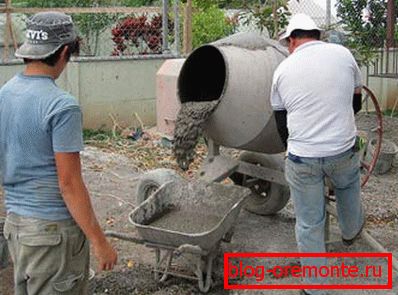
Formulation for mortar
Filling foundations, erection of plinths and grillages, the manufacture of concrete floors and other construction operations require the use of special solutions. They can be made independently, but for this purpose it is necessary to purchase a sufficient amount of ingredients and properly organize the technological process.
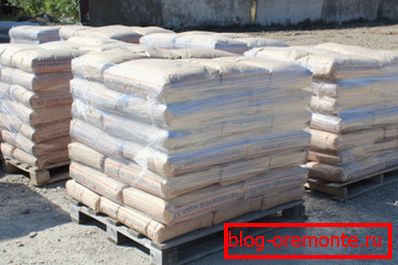
For the work we need:
- Portland cement brand M400 or M500. The price of the second option is higher, but at the same time the concrete turns out to be more durable, and the cement itself must be taken somewhat lower than indicated in the recipe.
- Sand - the cleaner, the better.. Before using the material, it is desirable to sift to remove all organic materials and large inclusions that can reduce the strength of concrete.

- Gravel or crushed stone - crushed minerals of considerable density. Limestone can be used to fill non-critical foundations with a low load, and granite can be used in the construction of structures with high bearing capacity.
- Water - used to hydrate cement. It is advisable to take clean drinking or process water without external impurities (organic, petroleum products, oils). It is also undesirable to use a liquid with a high salinity: after drying, there will be streaks on the surface.
- In the production of specific concrete, you can use other components.. Thus, the manufacture of aerated concrete is carried out using a pore-forming agent based on aluminum, and polymer granules are introduced into polystyrene concrete.

Naturally, not only the quality of the ingredients will be important, but also their ratio.
As a rule, the proportions of mortars of a certain strength are given in the regulatory documents (example below), but there is also the so-called "universal composition":
- Cement - 1 part.
- Sand - 2 parts.
- Crushed stone - 3 part.
- Water - 0.8 parts.
Note! With manual mixing, water consumption increases, so before you make concrete, you should take care of the liquid reserve. Especially - if imported water is used.
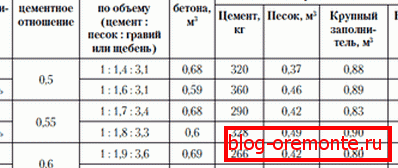
When all components are ready, you can get to work.
Preparation and use of the composition
Knead the solution
Equipment for the manufacture of concrete at home is no different complexity: you can rent a concrete mixer of a small volume, but you can restrict yourself to a metal trough. In the extreme case, the old bath is suitable, but after the completion of the work it will have to be thrown away.

The preparation process is also quite simple:
- We pour cement and sand into the tank, mixing them until a homogeneous mixture is obtained.
- Add gravel in small portions, continuing to mix the material.
Tip! If you immediately pour out the entire volume of stone filler, then it will be much more difficult to cope with the work, especially manually.
- Then add water - also in small portions. By adjusting the amount of fluid, we can control the mobility of the solution.
Once the material has reached the desired consistency (viscosity at the level of the batter, homogeneous structure) mixing can be stopped. Our solution is ready to use!
Preparing the formwork
When we plan to make concrete with our own hands, it is rarely limited to obtaining a solution. Most often we need a polymerized building stone, which is created by pouring the material into a formwork form.
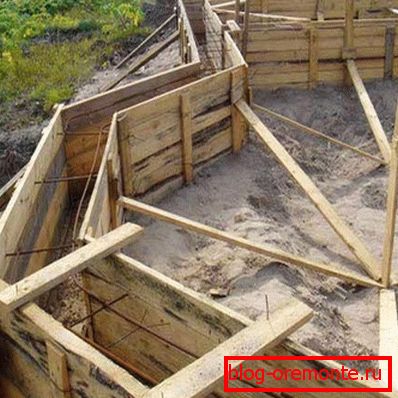
Here you need to act according to this scheme:
- First, we apply the markup, which will be used for fencing elements.
- Then we assemble shields from thick (up to 50 mm) boards or moisture-proof plywood.
- From the received boards we mount a timbering. From the inside we strengthen the structure with struts, and from the outside - with mowings. This is done so that the mass of the solution does not destroy the form during pouring.
- If the concrete is poured on the ground (for example, when building a foundation), then a sand-gravel pad up to 10 cm thick is laid at the bottom of the formwork.
Tip! You can also lay out the form of polyethylene - it will save us from leakage of the solution through the cracks.
- To give the structure additional strength, an armature frame assembled from steel rods is installed inside the formwork.
Filling and processing
Further our actions are determined by the following instruction:
- Feeding the solution with buckets, or using a gutter, pour concrete into the formwork.
- Using a shovel, distribute the material as evenly as possible.
- Next you need to seal the solution. This is done either through repeated piercing with a metal rod (bayonet), or using vibration equipment. Such processing allows to reduce the porosity of concrete, which will positively affect its quality.
- The surface of the material is smoothed with wet trowels.
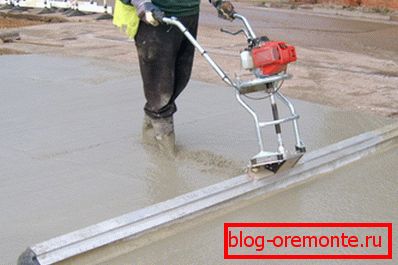
It remains only to wait until the concrete dries, but this process must be controlled:
- In order for the material to gain the necessary strength, it is necessary to provide the cement with enough moisture for hydration.
- To do this, we try to slow down the drying, covering the formwork with polyethylene and periodically moistening the upper layers of the solution.
- Also, insulation will not be superfluous, and in the cold season - and active heating of the setting cement.
In most cases, stripping is performed on approximately the tenth day. For a full set of strength, concrete usually needs from 28 days.
Conclusion
Naturally, this article describes the simplest concrete manufacturing technology. However, having mastered it, you can easily solve almost all the tasks associated with private construction. If you want to learn more about solutions and methods of their use, we recommend watching the video in this article.